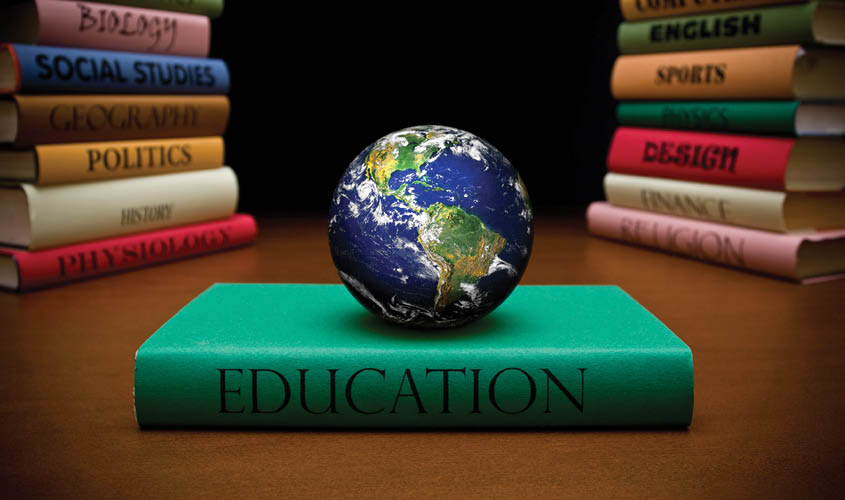This time again political parties went to the people with the promise of empowering them through a number of initiatives, ranging from poverty alleviation to healthcare and national security. However, education, which happens to be the only means of human empowerment, did not find any significant resonance in the political discourse. The issue was completely overshadowed by scanty doles that fundamentally incapacitate the individuals from realising their potential to the fullest and consequently drives them to join a sloganeering crowd. This might suit a particular dispensation for a while, but not the nation which is committed through its Constitution to eradicate inequalities, illiteracy and poverty. Despite numerous efforts, the country has not yet been able to ensure cent per cent transition from primary to upper primary as there remains a significant shortfall in this transition both in the General (about 7%) and SC/ST (about 9%) categories. The transition rates from secondary to senior secondary further plummets to 69% in the General category and 65% in SC and 58% in ST categories. Consequently, the Gross Enrolment Ratio (GER) in higher education at all India level remains as low as 25% and it further goes down significantly (within the range of only 13-18%) in states like Bihar, Jharkhand, Chhattisgarh, Assam, West Bengal and Nagaland. These shortfalls are alarming indicators for a good economy. This is primarily because of the apathy of the system in not according priority to the transformative role of education for national development and providing the right kind of resources to achieve the intended goals.
Ahead of the elections, the manifestos of the Bharatiya Janata Party and the Congress did not reflect either meaningful commitment to or throw any new light on the concerns of education. The BJP proposed to set up a student friendly education system, but its assumption that India has already achieved both access and equity in school education is a gross misunderstanding of the situation. Their proposal to establish a National Institutes of Teacher Training to institutionalise four-year integrated courses is good, but is no more than a reverberation of the already existing programs offered through the Regional Institutes of Education of the NCERT since 1963-64. Such a move will not yield the desired results without drawing meaningful lessons from the past experience of teacher preparation. In a system which could not assure the credibility of the Open and Distance Learning (ODL) programs, their emphasis on on-line courses to make a major resource for imparting higher education is a bit illusory. While their move to have a relook at the role of the regulatory institutions is appreciated, the idea of graded autonomy to institutions of higher learning is appalling as it would amount to creating a class of institutions and in the process hurt those which require greater handholding. When there is noticeable silence on the allocation of resources, one wonders how the quality of higher education will be assured and how 50 Institutions of Eminence will be established. The document nowhere talked about increasing students’ aid to meet their post admission requirements which is critically needed to support especially those belonging to the marginalized sections of society.
On the other hand, the Congress, which had brought education to the Concurrent List for valid reasons in 1976, proposed to transfer school education to the State List. On what basis was it assumed that all the states had reached undistinguishable levels of access, equity, retention and quality, things that are not supported by the current educational indices? But what was creditable in their manifesto was that for the first time a national party talked about 12 years of compulsory and free education in public schools and introduction of vocational training as a compulsory component of school education from grades nine to twelve. Their resolve to restore the autonomy of institutions and increasing the number of scholarship was also worth appreciating. But the notion of increasing the GER in higher education from the current level of 25% to 40% was a tall order and not in line with evidences emanating from previous decadal growth rates. In addition, it was also paradoxical to find a resolution mentioning to double the allocation for education to 6% of the GDP in the next five years, particularly when the expenditure on education had already touched 4.13% of the GDP.
So none of the two political parties applied much thought so as to ensure fresh directions to overhaul the education system. It is hoped that the new NDA government which has come to power, will revisit its resolutions and come up with a vision to expand the frontiers of knowledge and widen the human base to enable the youth realize their fullest potential and contribute towards transforming society into an egalitarian one. This will certainly warrant a serious exercise to ascertain afresh the quantum of resources required to support the kind and number of existing institutions and to make them available in an unwavering and resolute manner as was done during the Eleventh Five-Year Plan, which had witnessed unprecedented expansion of public institutions in the country. The nation will definitely look forward to the new government according top priority to education.
Prof Ved Prakash is former Chairman, University Grants Commission

